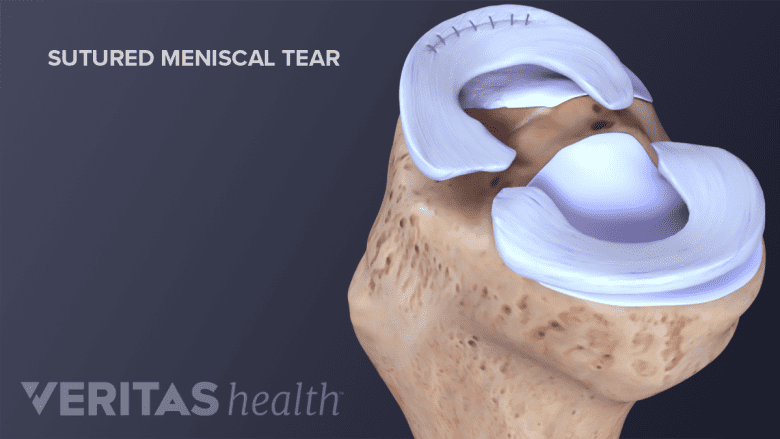The severity and location of the tear will be vital factors in determining a treatment regimen. For example, the outer third of the meniscus has a richer blood supply than the interior tissue, and injuries there will heal faster as the blood brings healing nutrients to the injured tissue.
The medical history of the patient, the individual’s level of athleticism and desire to return to sports will all be taken into consideration.
In This Article:
Common nonsurgical treatments for meniscal tears include:
RICE
As a first line of treatment, RICE consists of (1) resting, (2) icing at regular intervals, (3) compressing the knee with a compression wrap, and (4) elevating the injured knee. This initial approach will help keep the swelling at bay in the first few hours and days following the injury.
See The P.R.I.C.E. Protocol Principles
Anti-inflammatory medication
A type of non-steroidal anti-inflammatory medication (NSAID), such as ibuprofen (E.g. Advil), may be given to reduce swelling shortly after the injury.
Physical therapy
Prescribed physical therapy is often recommended after the injury, after surgery, or both. The goals of physical therapy are usually to control pain and swelling, help restore the normal range of motion to the knee, improve strength in the muscles that support the knee.
Electrical stimulation
Neuromuscular electrical stimulation of the muscles in the knee may be used with the goal of strengthening the meniscus and surrounding tissues.
Injections
Corticosteroid injections into the knee joint may be used in order to relieve pain or inflammation in the soft tissue of the knee.
If the tear is severe, of if the patient has suffered multiple or repeated knee injuries, surgical intervention to either remove or repair the damaged tissues of the injured menisci may be recommended.
Surgery for Meniscal Tears

Meniscal repair involves locating the tear and suturing the torn tissue.
Surgery is typically aimed at either removing the damaged tissue, repairing it, or possibly removing the meniscus entirely. While the success of the procedure will always be contingent upon a multitude of factors, these processes are considered most effective for individuals who are under the age of 30. The likelihood of success is also higher for individuals who seek treatment promptly after injury than those who wait. The most common types of surgery for meniscal tears include:
- Meniscectomy. In this procedure, surgeons insert an arthroscopic camera into the knee of the patient to locate and view the tear. For most tears, the damaged portion of the meniscus will be removed and then sutures will be used to reaffix the disc together. This is referred to as a partial meniscectomy. In a full meniscectomy, the entirety of the meniscus is removed, though this presents a heightened risk for future complications.
- Repair. If at all possible, particularly in younger patients, doctors usually prefer a meniscal repair to a meniscectomy. In this procedure, arthroscopic cameras are used to locate the tear, and the damaged area is then repaired with the use of surgical sutures.
See Knee Surgery for a Torn Meniscus
Recovery from surgery will depend on the severity of the tear and the nature of the treatment, but will often include physical therapy and a reduced physical workload until range of motion is restored and swelling disappears.

